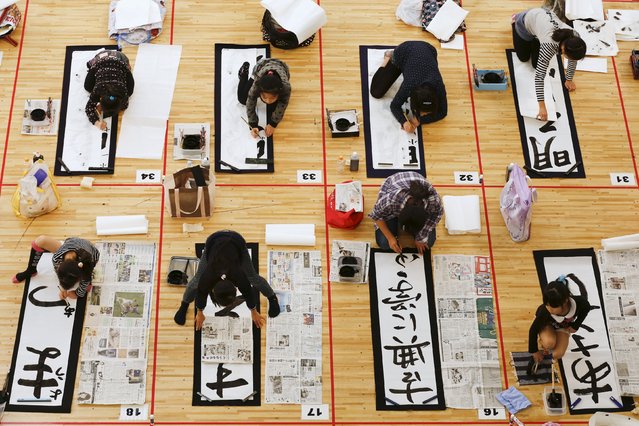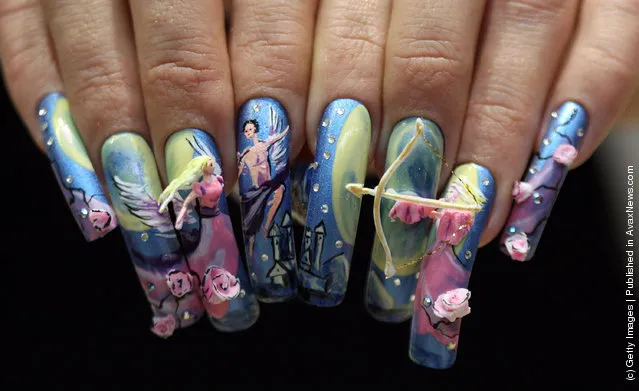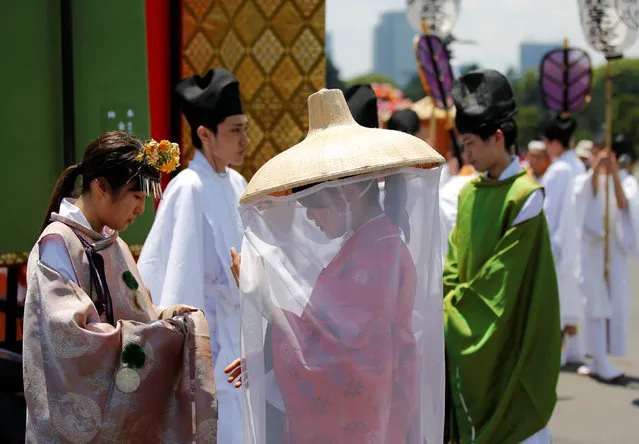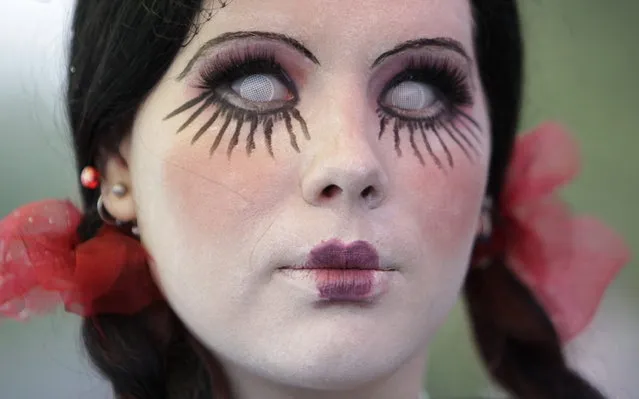
Pupils participate in a calligraphy contest to celebrate the New Year in Tokyo January 5, 2016. Over 3,000 calligraphers who qualified in competitions throughout Japan wrote resolutions or wishes onto paper sheets during the annual contest that marks the start of the new year, according to organizers. (Photo by Thomas Peter/Reuters)






